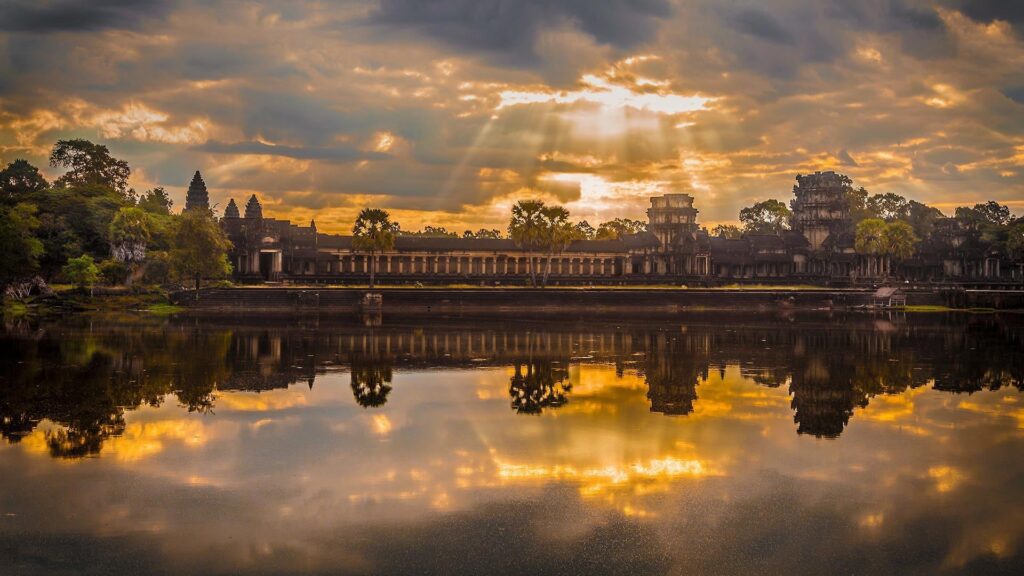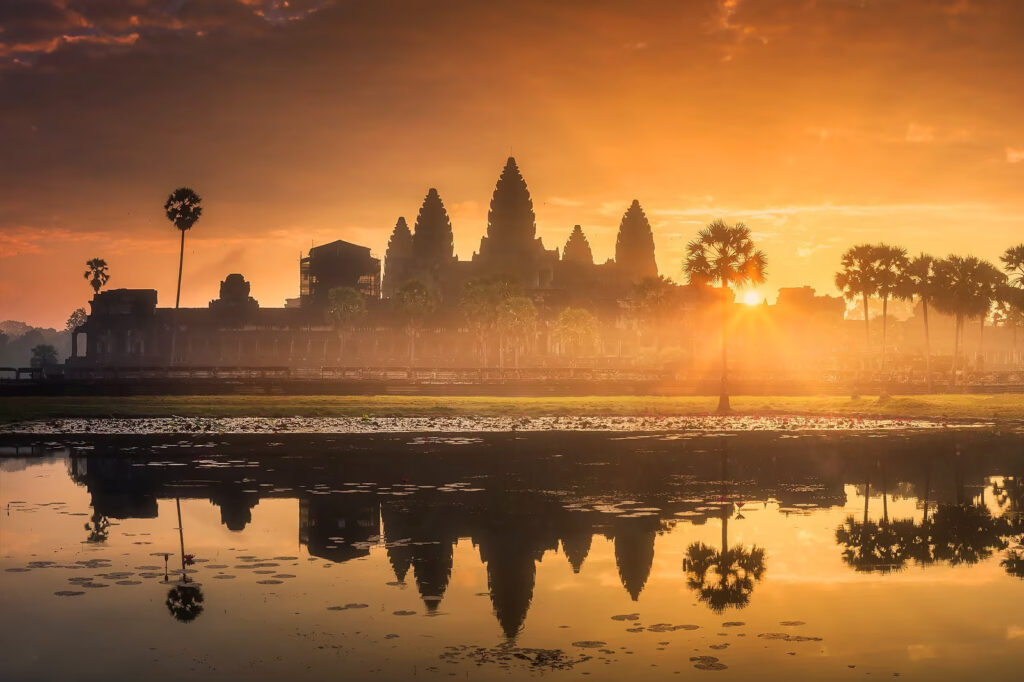Angkor Wat is the largest HINDU temple complex in the world. The temple was built by King SURYAVARMAN II in the early 12th century in YASODHARAPURA , present-day ANGKOR, the capital of the KHMER EMPIRE, as his state temple and eventual mausoleum. Breaking from the SHAIVISM tradition of previous kings, Angkor Wat was instead dedicated to VISHNU. As the best-preserved temple at the site, it is the only one to have remained a significant religious centre since its foundation – first Hindu, dedicated to the god VISHNU, then BUDDHIST. The temple is at the top of the high classical style of KHMER ARCHITECTURE. It has become a symbol of CAMBODIA, appearing on ITS NATIONAL FLAG, and it is the country’s prime attraction for visitors.
Angkor Wat combines two basic plans of Khmer temple architecture: the TEMPLE MOUNTAIN and the later GALLERIED TEMPLE, based on early DRAVIDIAN ARCHITECTURE, with key features such as the JAGATI. It is designed to represent MOUNT MERU, home of the DEVAS in HINDU MYTHOLOGY: within a MOAT and an outer wall 3.6 kilometres (2.2 mi) long are three rectangular galleries, each raised above the next. At the centre of the temple stands a QUINCUNX of towers. Unlike most Angkorian temples, Angkor Wat is oriented to the west; scholars are divided as to the significance of this. The temple is admired for the grandeur and harmony of the architecture, its extensive BAS-RELIEFS, and for the numerous DEVATAS adorning its walls.The modern name, Angkor Wat, means “Temple City” or “City of Temples” in KHMER; Angkor, meaning “city” or “capital city”, is a vernacular form of the word nokor , which comes from the SANSKRIT word nagar.WAT is the KHMER word for “temple grounds”, derived from the PALI word “vatta”. Prior to this time the temple was known as Preah Pisnulok (Vara Vishnuloka in Sanskrit), after the posthumous title of its founder.
Angkor is a region of Cambodia that served as the seat of the Khmer Empire, which flourished from approximately the 9th to 15th centuries. The Angkorian period began in AD 802, when the Khmer Hindu monarch Jayavarman II declared himself a “universal monarch” and “god-king”, until 1351, when Angkor first fell under Ayutthayan suzainry, to 1431, when Ayutthaya put down a rebellion and sacked the Khmer capital, causing its population to migrate south to Longvek. The ruins of Angkor are located amid forests and farmland to the north of the Great Lake (Tonlé Sap) and south of the Kulen Hills, near modern-day Siem Reap, and are a UNESCO World Heritage Site.



